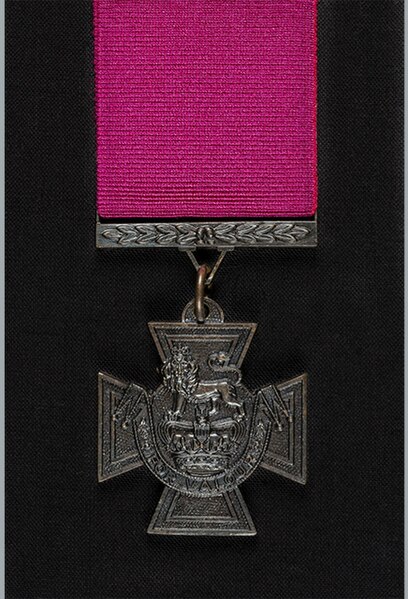Charles Heaphy VC was an English-born New Zealand explorer and recipient of the Victoria Cross (VC), the highest military award for gallantry "in the face of the enemy" that could be awarded to British and Empire forces at the time. He was the first soldier of the New Zealand armed forces to be awarded the VC. He was also a noted artist of the colonial period who created watercolours and sketches of early settler life in New Zealand.
Charles Heaphy
A sketch by Heaphy of the Māori rangatira, Te Rauparaha
Birdseye view of Port Nicholson, the original name for Wellington; a lithograph by Thomas Allom based on information provided by Heaphy
A colour lithograph of the area on which the town of Nelson was founded, based on a painting by Heaphy
The Victoria Cross (VC) is the highest and most prestigious decoration of the British honours system. It is awarded for valour "in the presence of the enemy" to members of the British Armed Forces and may be awarded posthumously. It was previously awarded by countries of the Commonwealth of Nations, most of which have established their own honours systems and no longer recommend British honours. It may be awarded to a person of any military rank in any service and to civilians under military command. No civilian has received the award since 1879. Since the first awards were presented by Queen Victoria in 1857, two thirds of all awards have been personally presented by the British monarch. The investitures are usually held at Buckingham Palace.
Obverse of the cross; ribbon: 1+1⁄2 inches (38 mm), crimson (blue ribbon for naval awards 1856–1918)
The front and back of Edward Holland's VC
The obverse of William Johnstone's VC showing the dark blue ribbon for pre-1918 awards to naval personnel
Victoria Cross as it appears on Commonwealth War Graves Commission headstones.








